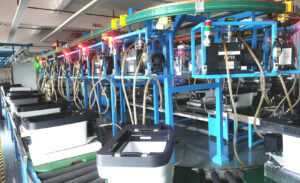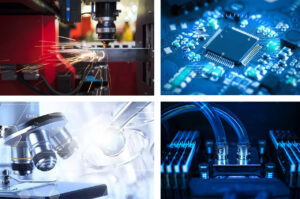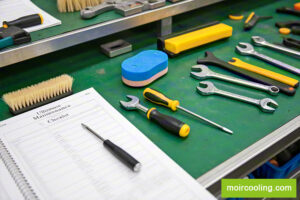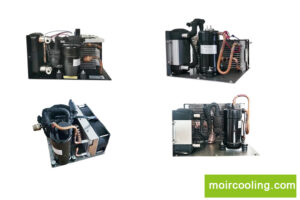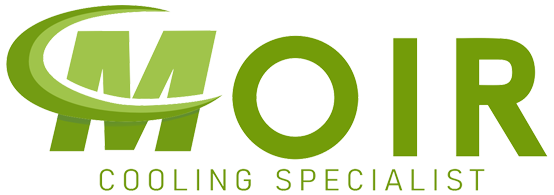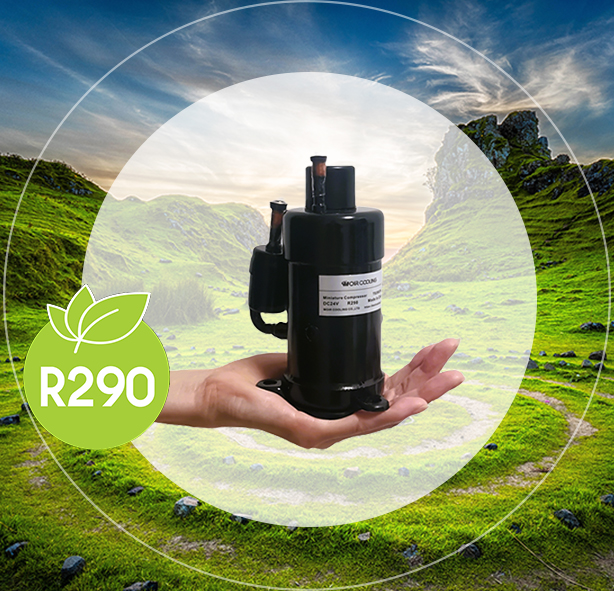Throttle devices play a pivotal role in refrigeration systems, their performance directly influencing the system’s energy efficiency and operational reliability. This article delves into a comparative analysis of three prevalent throttle devices in current refrigeration systems: Electronic Expansion Valve (EEV), Thermostatic Expansion Valve (TEV), and Capillary Tube, examining aspects such as refrigerant flow control range, control mechanisms, dynamic characteristics, load adaptability, and cost. The paper summarizes the advantages, disadvantages, and applicable scenarios of each device, providing a valuable reference for the selection and design of throttle devices in refrigeration systems.
I. Role of Throttle Devices in Refrigeration Systems
The fundamental function of a refrigeration system is to transfer heat from a low-temperature source (e.g., cold storage, air-conditioned rooms) to a higher-temperature environment, thereby achieving the purpose of cooling. This heat transfer process involves four essential stages: compression, condensation, throttling, and evaporation. Among them, the throttling process reduces the pressure of high-pressure liquid refrigerant to the evaporation pressure, crucial for facilitating the subsequent evaporation and heat absorption. The core component that fulfills this throttling function is the throttle device, which must meet the following requirements:
- Reliably reduce the condensing pressure to the evaporation pressure under operating conditions, ensuring adequate refrigerant supply to the evaporator.
- Flexibly adjust the flow rate to match the cooling demand as compressor and condenser conditions vary.
- Prevent excessive refrigerant flow into the evaporator, mitigating compressor flooding and minimizing flow fluctuations’ impact on system stability.
- Feature compact design, low cost, and ease of installation and operation.
Currently, three primary types of throttle devices are widely used in various refrigeration equipment: Electronic Expansion Valve (EEV), Thermostatic Expansion Valve (TEV), and Capillary Tube. These devices differ significantly in operating principles and regulating characteristics, each excelling in specific applications while inevitably possessing certain limitations. This paper focuses on analyzing and comparing these three typical throttle devices to offer insightful guidance for selecting and optimizing throttle components in refrigeration systems.
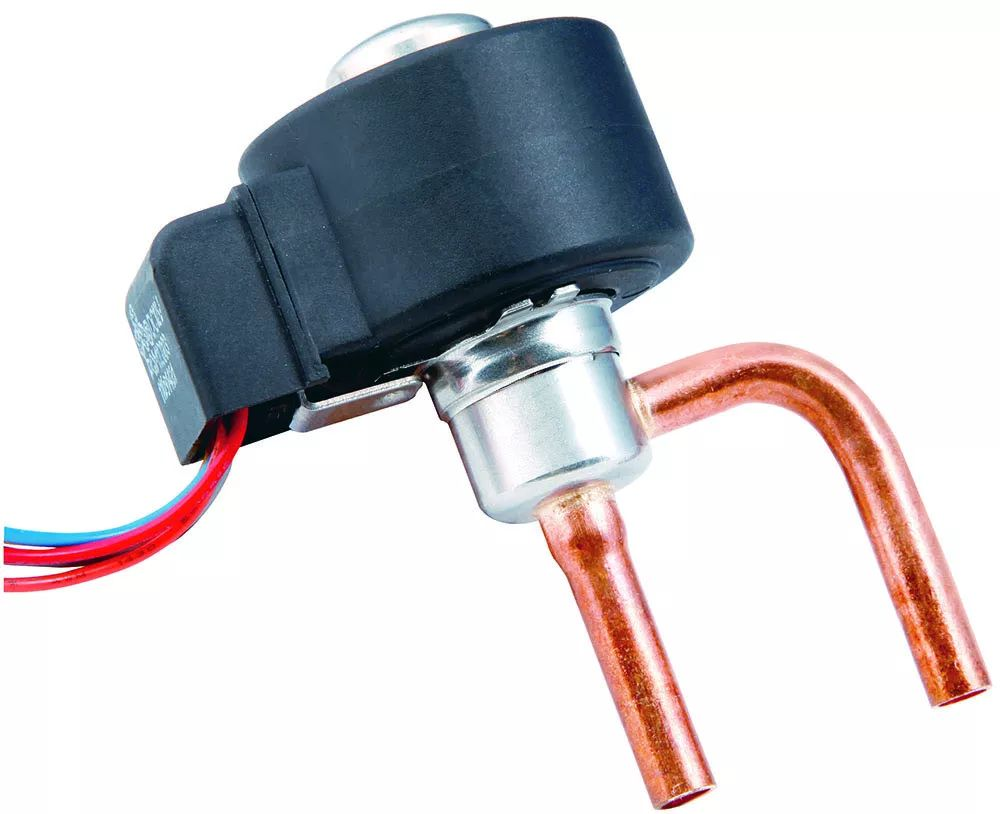
Electronic Expansion Valve
II. Working Principles of the Three Types of Throttle Devices
1. Electronic Expansion Valve (EEV)
The EEV precisely controls refrigerant flow by adjusting the position of its valve core, thereby modifying the flow area. An EEV typically comprises a valve body, valve core, pressure balance chamber, solenoid coil, spring, and temperature sensor. During operation, the controller outputs a PWM signal to alter the coil’s energization time, using electromagnetic force to push the valve core against the spring force, increasing the throttle opening. Conversely, the opening decreases. The temperature sensor measures the evaporator outlet superheat, serving as a feedback signal for flow regulation. The EEV boasts high adjustment precision, fast response, and the capability for complex control, hence its increasing popularity in household air conditioners, commercial coolers, and variable-frequency refrigerators. However, the EEV’s relatively high cost, narrow valve core-seat clearance requiring clean refrigerant, and complex control system limit its widespread adoption in small-scale refrigeration equipment.
2. Thermostatic Expansion Valve (TEV)
The TEV regulates refrigerant flow by utilizing changes in evaporator outlet superheat to vary the vapor pressure within its sensing bulb, pushing the valve core to adjust the opening. Its structure encompasses a valve body, valve core, sensing bulb, balancing spring, and external equalizer tube. When the evaporator outlet superheat rises, the sensing bulb absorbs heat, evaporating the internal working fluid and generating pressure that overcomes the combined force of the spring and evaporation pressure acting on the valve core’s upper surface, pushing it upward to enlarge the throttle opening and increase refrigerant flow, thus reducing the outlet superheat. Conversely, a decrease in superheat leads to a drop in sensing bulb pressure, causing the valve core to descend under spring and evaporation pressure, narrowing the throttle opening and decreasing refrigerant flow, subsequently raising the outlet superheat. The TEV automatically regulates evaporator outlet superheat based on sensing bulb temperature variations, requiring no external power and boasting a simple yet reliable structure.
The TEV offers moderate pricing, superior adjustment precision and response speed compared to the capillary tube, making it prevalent in medium-to-large refrigeration equipment like cold storages and refrigerated display cases. However, it occasionally experiences regulation lag and instability, and the installation of the sensing bulb and external equalizer tube complicates the system, hindering its application in small refrigeration products.
3. Capillary Tube
Capillary tube is a thin copper tube with a very small inner diameter (typically 0.56mm), utilizing viscous resistance and local resistance to create a throttling effect. They are widely used in small refrigeration equipment such as household refrigerators and water dispensers. As depicted in Figure 3, during operation, high-pressure liquid refrigerant undergoes rapid expansion within the capillary tube, resulting in a sharp pressure drop accompanied by slight vaporization. The throttled low-pressure refrigerant then enters the evaporator to absorb heat and evaporate, subsequently being drawn into the compressor for continuous circulation. Capillary tubes are characterized by their simple structure, absence of moving parts, low manufacturing cost, ease of installation, and high long-term operational reliability. However, they lack inherent adjustment capabilities, with flow rates solely determined by tube length and diameter parameters, rendering them unable to adapt to fluctuations in load. Furthermore, capillary tube design is intricate, and challenges such as suboptimal refrigerant supply processes, uneven refrigerant distribution, and evaporator flooding frequently arise [11]. Consequently, capillary tubes are primarily confined to small compressor systems.
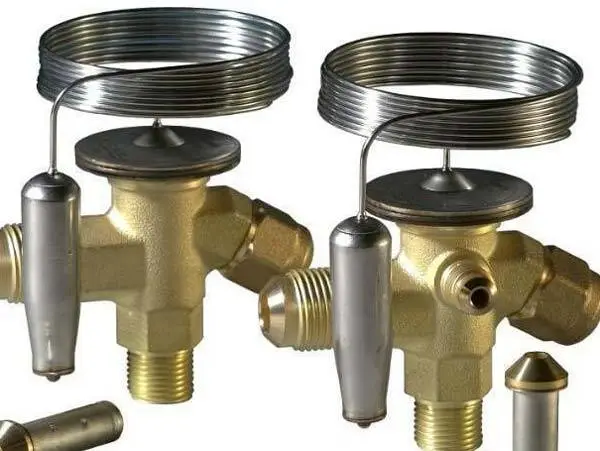
Thermostatic Expansion Valve
III. Performance Comparison and Analysis
- Refrigerant Flow Regulation Range
- EEV (Electronic Expansion Valve) typically achieves a flow regulation ratio (ratio of rated flow to minimum flow) of up to 30:50, enabling 0-100% continuous adjustability through varying PWM duty cycles, comprehensively covering compressor operating conditions.
- TEV (Thermostatic Expansion Valve) has a regulation ratio between 1.5 and 4, which, while less flexible than EEV, suffices for flow demands under most operating conditions.
- Capillary tube flow is entirely dependent on pipeline parameters, offering no adjustability; tube diameter and length are selected based on maximum load conditions. When loads decrease, excessive flow leads to elevated evaporation pressure and reduced energy efficiency.
- Regulation Methods and Control Signals
- EEV employs stepper motors or proportional-integral control, precisely adjusting flow rates based on evaporator outlet superheat, ambient temperature, and other parameters through PWM signal duty cycle variations. This method is complex but yields high regulation quality.
- TEV automatically adjusts valve opening based solely on pressure changes in the sensing bulb caused by evaporator outlet superheat variations. Its structure is simple, but regulation accuracy and dynamic response lag behind EEV.
- Capillary tubes rely solely on pipeline resistance for throttling, without any control signals, limiting their applicability to compact refrigeration systems.
- Dynamic Response Characteristics
- EEV utilizes high-frequency electromagnetic pulse control, achieving a response time of merely 1-2 seconds, enabling swift adaptation to system fluctuations and smooth regulation processes.
- TEV relies on sensing bulb deformation to drive valve stem movement, resulting in response times exceeding 10 seconds, accompanied by hysteresis and overshoot phenomena.
- Capillary tubes, lacking any regulatory function, exhibit the poorest adaptability to system condition changes, as their throttling characteristics are solely determined by pipeline parameters.
- Load Adaptability
- EEV offers precise refrigerant flow control with a substantial flow regulation ratio, accommodating load variations from 0 to 100%, making it prevalent in variable-frequency compressor systems.
- TEV, though less adaptable than EEV, still possesses a degree of load adaptability, fulfilling requirements in most applications. However, under drastic load changes, it may experience insufficient or excessive refrigerant supply.
- Capillary tubes lack load adaptability altogether; excessive refrigerant supply during load reductions leads to elevated evaporation pressure and deteriorated energy efficiency.
- Cost
- EEV, driven by stepper motors or linear compressors and accompanied by intricate control systems, incurs the highest cost. However, costs are gradually declining with technological advancements and large-scale applications.
- TEV primarily utilizes brass for structural materials, with well-established processing techniques.
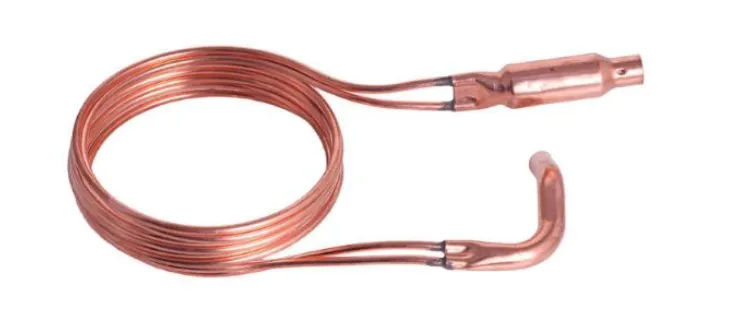
Capillary
IIII. Application Examples
- In a commercial refrigerated cabinet with a freezing capacity of 3.5kW, an EEV (model EX5-24B21 from Samsung EGIS) was employed as the throttling device. Experiments revealed that compared to a conventional TEV solution, the EEV-equipped system exhibited 11% and 9% increases in refrigerating capacity under Food1 (refrigeration at 4°C) and Food2 (freezing at -18°C) conditions, respectively, accompanied by 12% and 10% improvements in system COP.
- The scholars have designed an EEV control system based on Arduino microcontroller for a certain model of air-source heat pump water heater. Through the application of fuzzy PID algorithm to adjust the expansion valve opening, a comparative experiment was conducted with the traditional TEV scheme. The results show that under standard conditions (ambient temperature of 20°C, water temperature of 15~55°C), the system’s average COP is increased by 7.6% and the overall energy consumption is reduced by 5.3% when using the EEV scheme compared to the TEV scheme.
- Researchers optimized the capillary diameter and length parameters for a household air-cooled refrigerator. Through theoretical calculations and experimental tests, the optimal capillary diameter was determined to be 0.8mm with a length of 3.2m. Under rated conditions, this design can improve the system’s energy efficiency ratio by 4.7%, increase the freezing capacity by 5.2%, and keep the refrigerator’s temperature fluctuation below 2°C, ensuring stable and reliable operation.
IV. Summary and Outlook
- The Electronic Expansion Valve (EEV) leverages its precise flow control capabilities, wide range of adjustability, and exceptional dynamic response characteristics, demonstrating significant advantages in variable-frequency compressor systems and scenarios with substantial load fluctuations. Its future applications are expected to broaden further, though costs and reliability remain constraining factors.
- The Thermostatic Expansion Valve (TEV) boasts moderate self-regulating abilities and a relatively low cost, making it indispensable in fixed-frequency compressor systems and settings with less drastic load changes.
- Capillary tubes exhibit limited adjustment capabilities, they excel in their simplicity and cost-effectiveness, ensuring their persistence in small-scale refrigeration equipment.
Looking ahead, with the rapid development of the refrigeration industry and the escalating demands for energy conservation and environmental protection, throttling devices must prioritize precise and reliable flow regulation while also focusing on optimizing performance across all operating conditions and embracing intelligence.
Comparison Chart for Clearer Reference
| Characteristics | Electronic Expansion Valve (EEV) | Thermostatic Expansion Valve (TEV) | Capillary |
| Flow Control Precision | High | Moderate | Low (Fixed) |
| Adjustable Range | Very wide (up to 30:1) | Moderate (1.5:1 to 4:1) | Fixed (determined by length and diameter) |
| Dynamic Response | Excellent (1-2 seconds) | Moderate (10+ seconds) | Poor (fixed flow) |
| Load Adaptability | High (0-100% load variation) | Moderate | Low (fixed flow, no adaptability) |
| Cost | High (due to control complexity) | Low to moderate | Lowest |
| Control Mechanism | Stepper motor or PID control | Temperature-sensitive bulb | None (passive flow control) |
| Applications | Variable-frequency compressors, high load variability | Fixed-frequency compressors, moderate load variability | Small refrigeration systems, low cost applications |
| Reliability and Durability | Moderate to high (depends on controls) | High | High (simple, few moving parts) |
| Optimization and Intelligence | Potential for full optimization and integration with smart controls | Limited potential for optimization | Limited potential for optimization |
Moir Cooling is committed to providing a broad portfolio of innovative, high-performance and economical thermal management solutions for demanding applications where compact size and reliability are key parameters. We provide custom engineered or standard solutions to meet your unique cooling requirements. Contact us info@moircooling.com today for a free evaluation for your project now.


